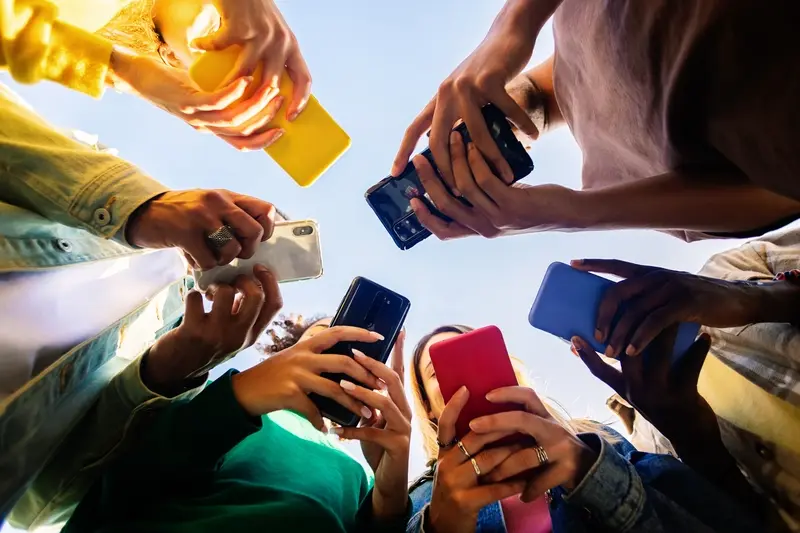How Do You Design Apps That Work for Both Kids and Adults?
Ever tried watching a five-year-old navigate an iPad while their grandparent struggles with the same interface? It's fascinating really—and a bit mad when you think about it. Here we have this amazing piece of technology that can connect generations, yet most apps are built with just one age group in mind. After years of developing mobile apps for families, schools, and multi-generational businesses, I've seen this challenge pop up again and again.
The thing is, designing apps that work for both kids and adults isn't just about making bigger buttons or adding more colours. It's about understanding how different generations think, learn, and interact with technology. A seven-year-old processes information differently than their mum, who processes it differently than their gran. But here's what I've learned—when you get multi-generational design right, you create something that's genuinely better for everyone.
The best family apps aren't dumbed down for kids or overcomplicated for adults—they're thoughtfully designed to meet everyone where they are
Most developers I meet think inclusive design means compromise; that you have to sacrifice sophistication to make things simple enough for children. That's complete rubbish, honestly. The most successful apps I've built over the years have been the ones that embrace the challenge of serving multiple user personas without talking down to anyone. Whether it's a banking app that parents and teens both need to use, or an educational game that keeps kids engaged while giving parents the control they want, the secret lies in understanding what each generation brings to the table—and designing with all of them in mind from day one.
Understanding Multi-Generational Users
Right, so here's the thing about designing for multiple generations—its not just about making text bigger or smaller. I've worked on family apps where a six-year-old and their grandparent need to use the same interface, and honestly, the differences in how they approach technology can be quite dramatic.
Kids today are basically digital natives, right? They swipe before they can properly talk and expect everything to respond instantly to their touch. But here's what's interesting—they also get frustrated really quickly if something doesn't work the way they expect. Adults, especially older ones, tend to be more methodical. They'll read instructions (shocking, I know!) and follow a logical sequence of steps.
Key Generational Differences
- Children expect immediate feedback and visual rewards
- Teenagers want social features and personalisation options
- Adults prefer clear instructions and confirmation messages
- Older users need larger touch targets and simpler navigation
But actually, there are more similarities than you might think. Everyone wants apps that work reliably and don't waste their time. The difference is in how they define "working reliably." A child might abandon an app if it takes more than three seconds to load, whilst an adult might be more patient but expect clearer error messages when things go wrong.
Common Ground
What I've found really works is focusing on what psychologists call "universal design principles." This means creating interfaces that are flexible enough to accommodate different skill levels and preferences without making anyone feel like the app wasn't built for them. When you're building accessible mobile apps, simple gestures, consistent visual cues, and forgiving interaction models benefit everyone—regardless of whether they're eight or eighty.
Creating Flexible User Personas
Right, let's talk about user personas—but not the dusty old marketing versions that sit in folders and never get looked at again. When you're designing for multiple generations, your personas need to be living, breathing documents that actually reflect how different age groups use mobile devices.
I've seen too many teams create personas like "Sarah, 8, loves games" and "Bob, 45, needs banking features" then wonder why their app feels disjointed. The problem? They're thinking in silos instead of understanding how real families actually share and use apps together.
Building Dynamic User Groups
Instead of rigid age-based personas, I create what I call "context personas"—they focus on situations rather than demographics. Think "The Bedtime Story Reader" (could be a parent, grandparent, or older sibling), "The Quick Task Completer" (anyone who needs to get something done fast), or "The Explorer" (the person who loves discovering new features).
These context-based personas capture the reality that a 10-year-old navigating an app solo behaves differently than the same child using it with their mum. Same person, completely different needs and capabilities.
Create "journey maps" that show how different generations might hand off app usage to each other—like a grandparent starting a photo album that grandkids will add to later.
The magic happens when you design for these overlapping contexts rather than separate age groups. Your personas become flexible enough to guide decisions about features that work across generations, whilst still acknowledging that an 80-year-old and an 8-year-old will approach your app very differently.
Navigation is where most apps lose their users—and its not always obvious why. I've seen brilliant apps with great features fail completely because people couldn't figure out how to move around them. When you're designing for multiple age groups, this challenge becomes even trickier because what feels natural to a teenager might be completely baffling to their grandparents.
The secret? Keep it simple, but make it flexible. I always start with the assumption that someone's using the app with one hand while doing something else entirely. Maybe they're holding a coffee, maybe they're walking, maybe they're just distracted. Your navigation needs to work in all these scenarios.
Bottom tabs work brilliantly for this. They're easy to reach, they stay consistent, and people of all ages understand them instinctively. But here's where it gets interesting—you can layer complexity on top of this simple foundation. Young users will naturally discover gesture controls and shortcuts, while older users can stick to the clear, labeled buttons.
Font size matters more than you think. I've learned this the hard way after watching someone struggle with tiny navigation labels during user testing. Make your text readable without squinting, and use icons that actually make sense. That hamburger menu icon? Half your users don't know what it means, so maybe just write "Menu" instead.
Actually, speaking of menus—don't hide important stuff behind multiple layers. If someone needs to tap more than three times to reach a core feature, you've probably overcomplicated things. The best navigation feels invisible because it just works the way people expect it to work. No learning curve, no confusion, just smooth movement from one part of your app to another.
Making Text and Visuals Accessible
Right, let's talk about something that can make or break your app—making sure everyone can actually read and see what you've built. I've seen brilliant apps fail because they used tiny grey text on white backgrounds; honestly, it's maddening when something so fixable becomes such a barrier.
Text size is where most apps get it wrong. You need at least 16px for body text, but I'd push for 18px if you want to be safe. Kids might have perfect vision, but they're often using phones quickly or in bright sunlight. Adults? Well, let's just say reading glasses become more common after 40. The good news is that both groups benefit from larger, clearer text—it's not about dumbing down, it's about being considerate.
Colour and Contrast Matter More Than You Think
Your colour choices need to work for everyone, including people with colour blindness (which affects about 8% of men, by the way). High contrast isn't just good practice; it's the difference between usable and unusable for many people. I always test with tools that simulate different types of colour blindness—you'd be surprised how often "obvious" colour coding falls apart. These principles apply just as much when designing accessible AR experiences as they do for traditional mobile interfaces.
The best accessible design is invisible design—when done right, nobody notices the accessibility features because they just feel natural and easy to use.
Icons need text labels or at least tooltips. That hamburger menu icon? Not everyone knows what it means, especially older users who didn't grow up with smartphones. Visual hierarchy through size, spacing, and contrast helps everyone navigate faster. When your 8-year-old user and their grandmother can both use your app comfortably, you've nailed inclusive design.
Building Trust Through Safety Features
When you're designing for both kids and adults, safety isn't just a feature—it's the foundation that everything else builds on. I've seen too many family apps fail because they didn't get the trust equation right from the start. Parents need to feel confident their children are protected, while kids need to feel they're not being treated like babies.
The key is making safety visible without making it intrusive. Take parental controls, for example. Hide them too deep in settings and parents won't use them; make them too obvious and kids feel like they're being watched every second. I usually recommend a layered approach where safety features work quietly in the background but can be accessed easily when needed.
Core Safety Features That Actually Work
- Age-appropriate content filtering that adapts as children grow
- Time limits that can be adjusted without causing tantrums
- Clear privacy settings that parents can understand (no legal jargon!)
- Safe communication features if your app includes social elements
- Easy reporting tools for inappropriate content or behaviour
- Transparent data collection practices explained in plain English
One thing I've learned is that over-engineering safety features often backfires. Kids are smart—they'll find workarounds if the restrictions feel unfair or arbitrary. Instead, focus on education alongside protection. Show children why certain features exist and how they help keep everyone safe.
The most successful family apps I've built treat safety as a collaborative effort between parents and children, not a battleground. When safety features feel helpful rather than restrictive, you'll find both generations are more likely to engage with your app long-term. And that's what we're all after, isn't it?
Balancing Fun and Function
Here's where things get properly tricky—making your app enjoyable for a 10-year-old while keeping it useful for their mum. I've seen too many apps that try to be playful and end up looking childish, or apps that aim for sophistication and bore younger users to tears. The secret isn't picking one over the other; its about layering your design smartly.
Start with your core functionality and make sure that works perfectly for everyone. Then add the fun elements as enhancements, not distractions. Think about how Duolingo handles this—the language learning is serious business, but the streaks, achievements, and that little green owl keep kids engaged without making adults feel silly. The gamification sits on top of solid educational content.
Smart Visual Hierarchy
Your visual design needs to work on multiple levels too. Use colours and animations that feel fresh but not juvenile. I always tell clients: if it looks like it belongs in a nursery, you've gone too far. Clean, bright interfaces with subtle animations work better than cartoon explosions and rainbow gradients.
The key is giving users control over their experience. Let people customise their interface—maybe kids want more visual feedback and sound effects, while adults prefer a cleaner, quieter experience. Don't force everyone into the same box.
Progressive Disclosure
One approach that works well is progressive disclosure. Show the simple version first, then reveal more complex features as users explore. This way, younger users can stick with the basics while power users can dive deeper into advanced functionality when they're ready.
Test your "fun" elements with actual adults—not just your development team. What feels playful to a 25-year-old developer might feel patronising to a 45-year-old parent.
Testing Across Age Groups
Testing with real users is where the magic happens—and where you'll discover things that will make you go "bloody hell, I never thought of that!" I've lost count of how many times I've watched a five-year-old use an app in a completely different way than I expected, or seen a grandmother struggle with something I thought was obvious.
The key is to test early and test often with people from different age groups. Don't wait until your app is "perfect" because it never will be until real users get their hands on it. Start with paper prototypes if you need to—kids especially love drawing on things and pointing at what they want to tap.
Setting Up Age-Appropriate Testing Sessions
Testing with children requires a different approach than adult sessions. Keep sessions shorter (15-20 minutes max), have parents present, and make it feel like play rather than work. For older adults, allow extra time and don't rush them—they often provide the most detailed feedback once they get comfortable.
I always test with at least three people from each target age group. Here's what I look for:
- Where do they tap first when they open the app?
- What confuses them or makes them pause?
- Do they understand the icons without explanation?
- Can they complete key tasks without help?
- What language do they use to describe features?
One thing I've learned is that kids will tell you exactly what they think—no filter whatsoever. Adults, especially older ones, often try to be polite about problems they encounter. You need to watch their behaviour more than listen to their words to spot the real issues.
Building apps that work for both kids and adults isn't just about ticking boxes—it's about understanding that good design transcends age barriers. After years of working on multi-generational design projects, I can tell you that the apps that succeed are the ones that respect their users' intelligence, regardless of whether they're 8 or 80.
The key lies in creating inclusive design that doesn't talk down to anyone. When you focus on clear navigation, readable text, and intuitive interactions, you're not just making your app accessible to different age groups; you're making it better for everyone. It's honestly one of those situations where designing for the extremes benefits the middle ground too.
Your user personas should reflect real people with real needs, not stereotypes about what kids or older adults can or cannot do. I've seen too many apps fail because they assumed children needed everything to be bright and loud, or that adults couldn't handle modern interfaces. The truth is somewhere in the middle—and that's where successful multi-generational apps live.
Testing across age groups will always reveal things you didn't expect. Kids might struggle with something you thought was simple, whilst adults might embrace features you assumed were too complex. This feedback loop is what separates apps that work from apps that just exist in the app stores.
At the end of the day, designing for multiple generations comes down to empathy and respect. When you create mobile apps that acknowledge the diverse ways people interact with technology, you're building something that can truly serve your entire user base. And in today's competitive market, that kind of inclusive thinking isn't just nice to have—it's what keeps users coming back.
Share this
Subscribe To Our Learning Centre
You May Also Like
These Related Guides

How Do Mental Models Guide Mobile Interface Design?

How Can I Tell If My App's Design Matches User Expectations?



